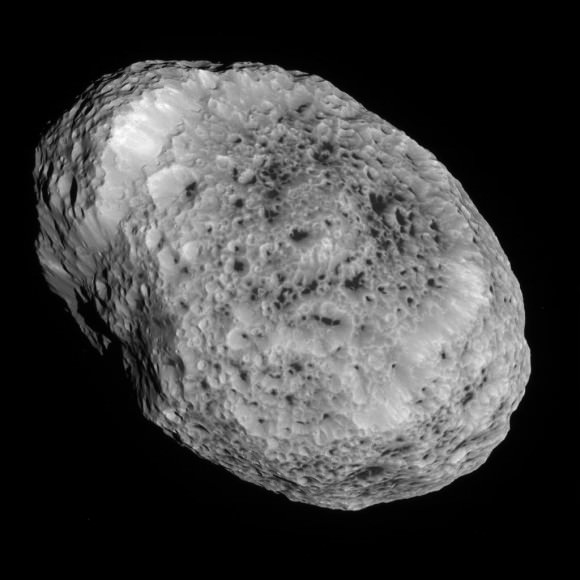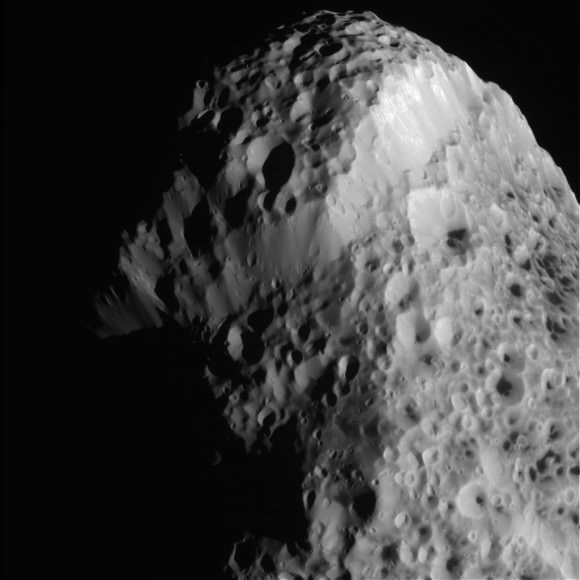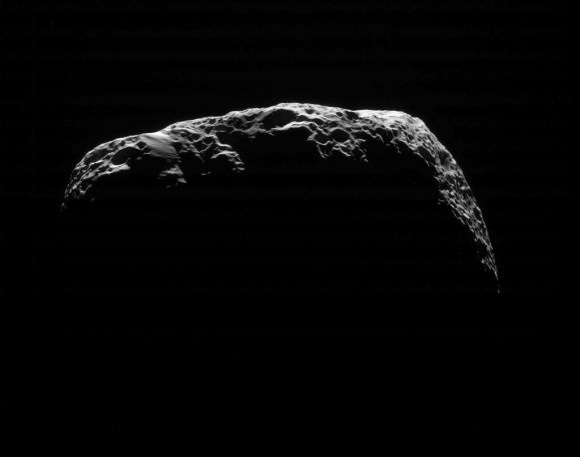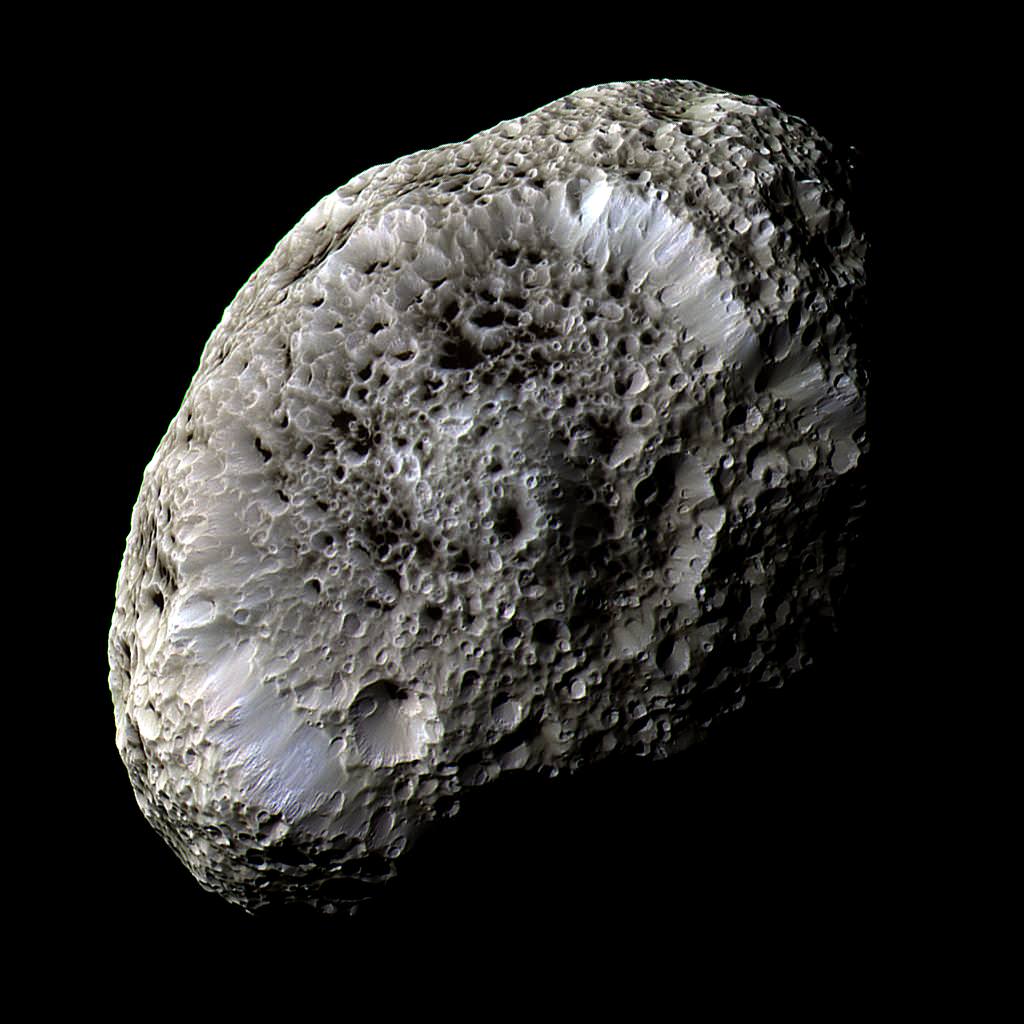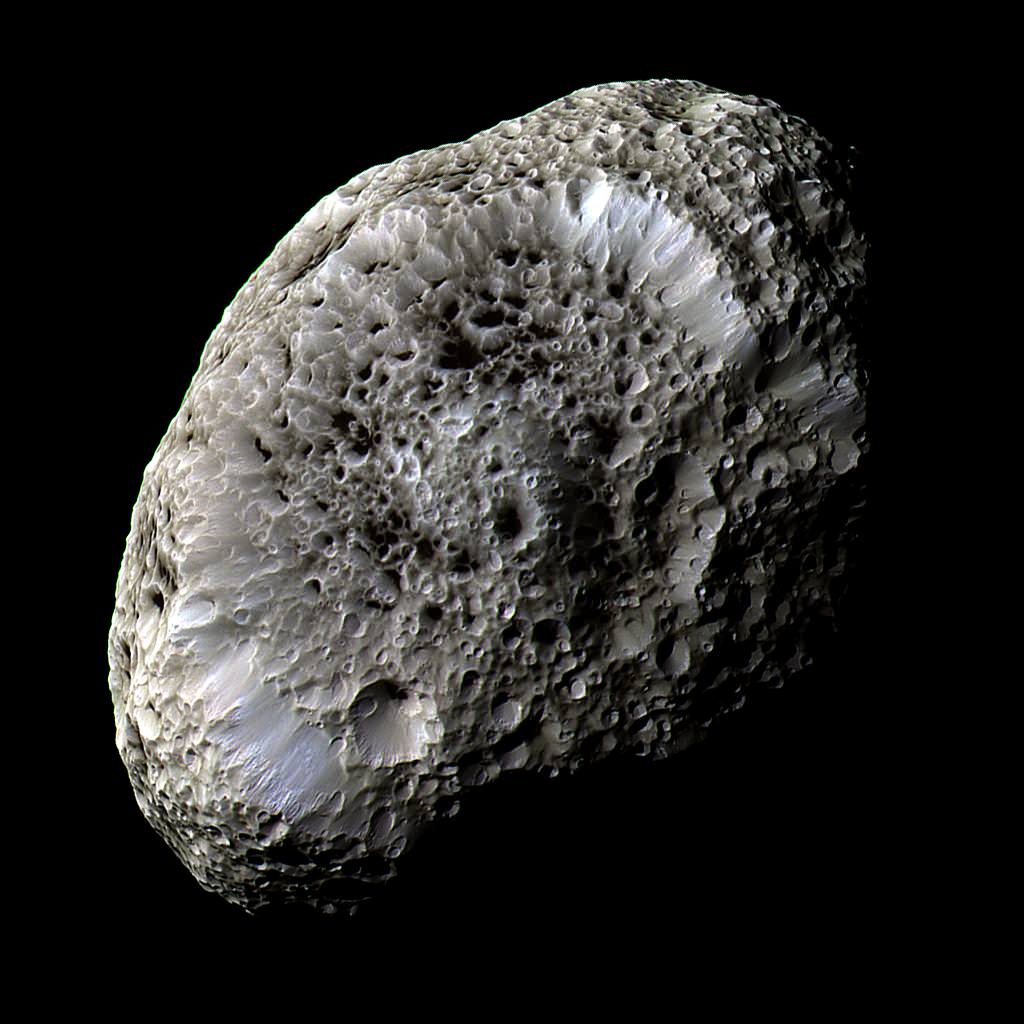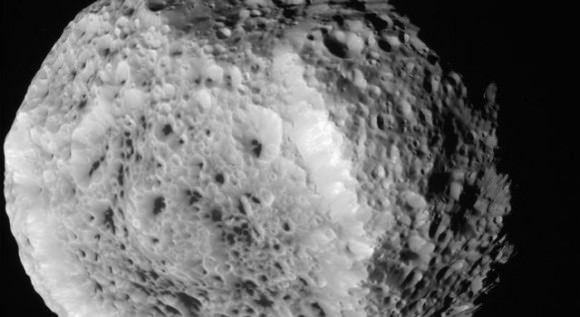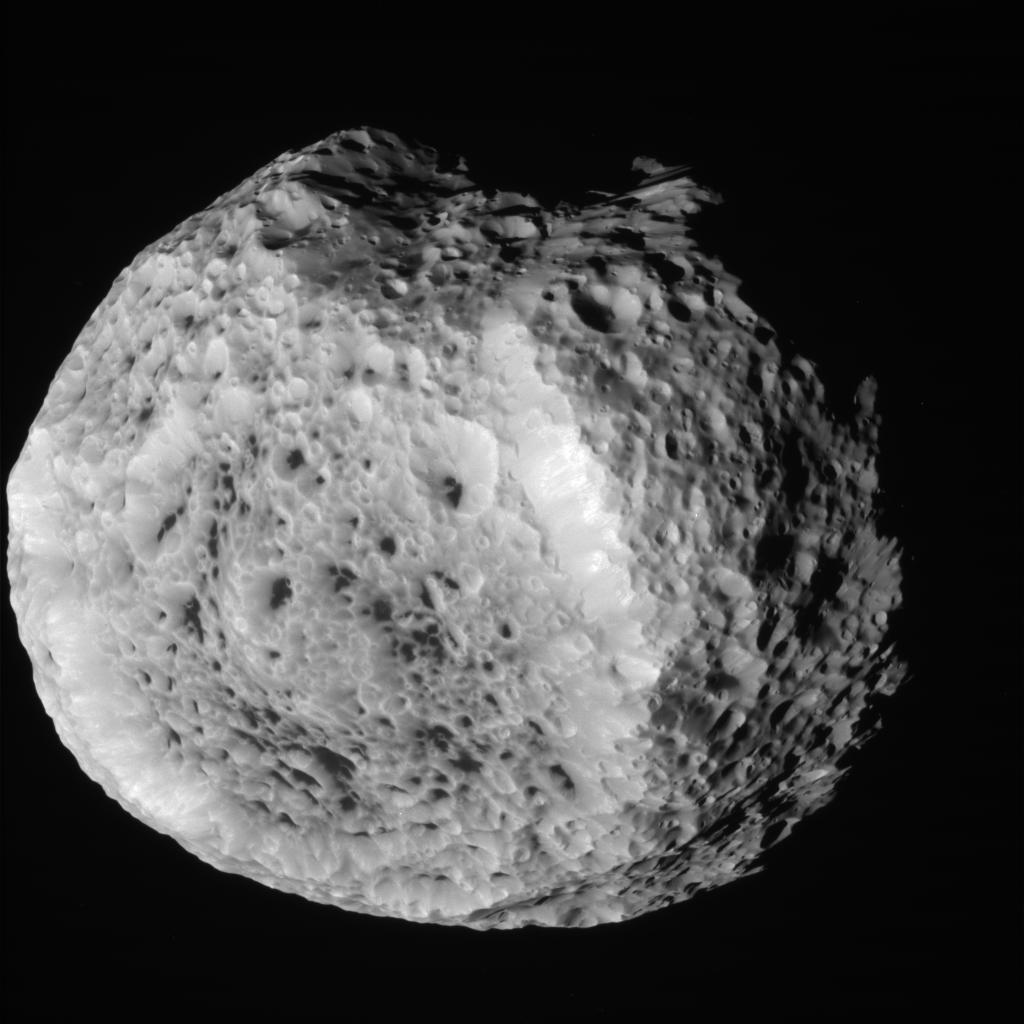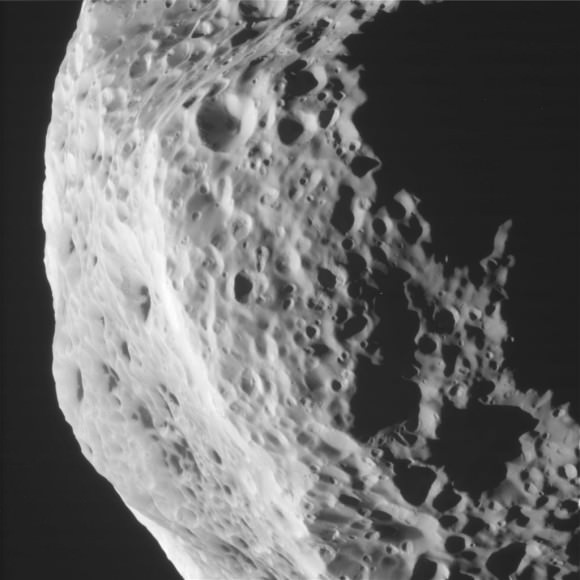On Sunday, May 31, the Cassini spacecraft will perform its last close pass of Hyperion, Saturn’s curiously spongelike moon. At approximately 9:36 a.m. EDT (13:36 UTC) it will zip past Hyperion at a distance of about 21,000 miles (34,000 km) – not its closest approach ever but considerably closer (by 17,500 miles/28,160 km) than it was when the image above was acquired.*
This will be Cassini’s last visit of Hyperion. It will make several flybys of other moons within Saturn’s equatorial plane over the course of 2015 before shifting to a more inclined orbit in preparation of the end phase of its mission and its operating life in 2017.
At 255 x 163 x 137 miles (410 x 262 x 220 km) in diameter, Hyperion is the largest of Saturn’s irregularly-shaped moons. Researchers suspect it’s the remnant of a larger body that was blown apart by an impact. Hyperion’s craters appear to have a “punched-in” look rather than having been excavated, and have no visible ejecta or secondary craters nearby.
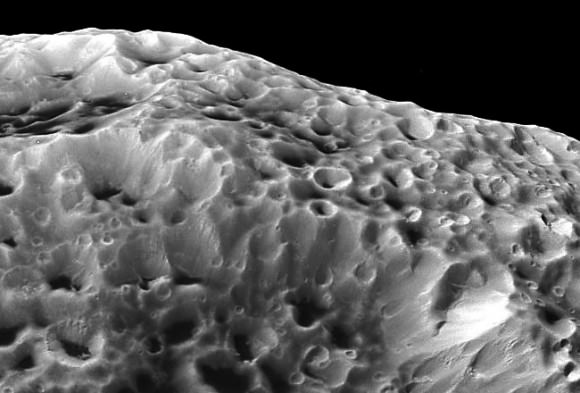
Hyperion orbits Saturn in an eccentric orbit at a distance of over 920,000 miles (1.48 million km)…that’s almost four times the distance our Moon is from us! This distance – as well as constant gravitational nudges from Titan – prevents Hyperion from becoming tidally locked with Saturn like nearly all of its other moons are. In fact its rotation is more of haphazard tumble than a stately spin, making targeted observations of any particular regions on its surface virtually impossible.
Images from the May 31 flyby are expected to arrive on Earth 24 to 48 hours later.
As small as it is Hyperion is Saturn’s eighth-largest moon, although it appears to be very porous and has a density half that of water. Read more about Hyperion here and see more images of it from Cassini here and here.
Source: NASA
*Cassini did come within 310 miles (500 km) of Hyperion on Sept. 26, 2005, but the images to make up the view above were acquired during approach.
UPDATE June 1, 2015: the raw images from Cassini’s flyby have arrived on Earth, check out a few below. (Looks like Cassini ended up with the same side of Hyperion again!)
